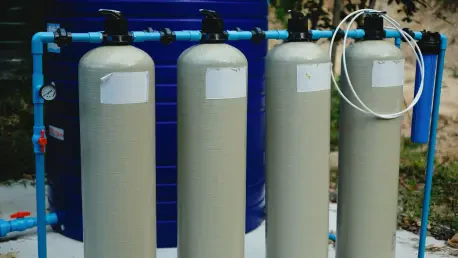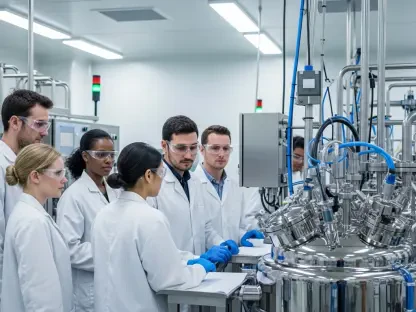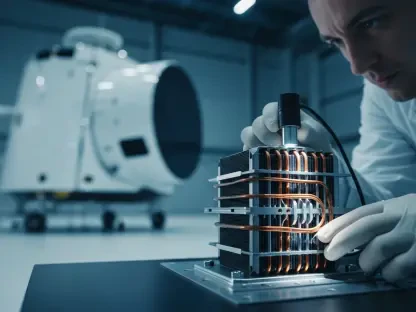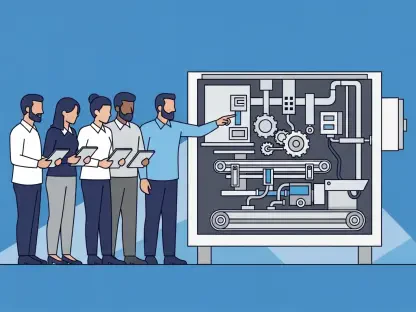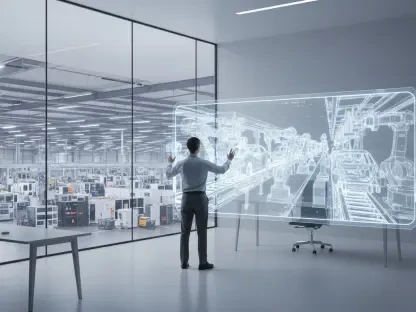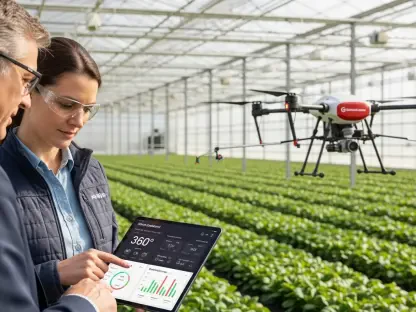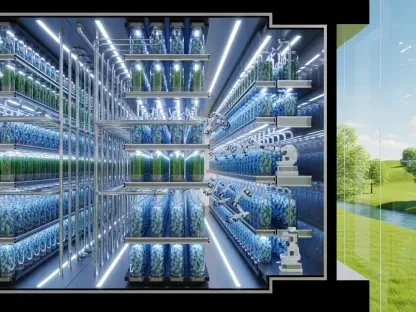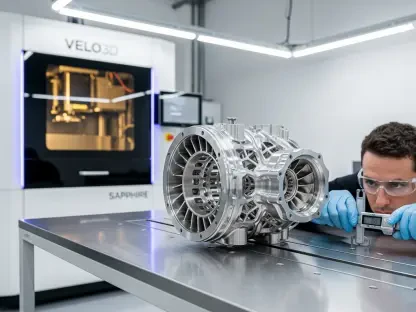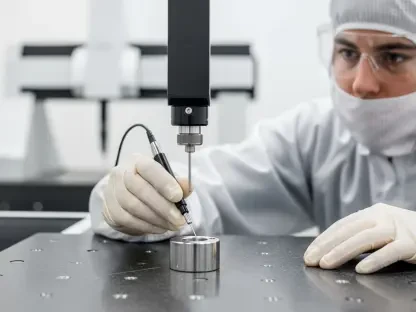In the ever-evolving world of pharmaceuticals, liquid filtration stands as a silent yet indispensable force ensuring the safety, purity, and efficacy of life-saving drugs, biologics, and vaccines. As the industry faces mounting regulatory pressures, complex drug formulations, and a growing demand for sustainable practices, this technology is set to become even more critical by 2034. Far beyond a mere compliance tool, liquid filtration is emerging as a driver of innovation, enabling manufacturers to meet stringent standards while enhancing efficiency. With the global market on a robust growth path, fueled by technological advancements and regional expansions, the next decade promises transformative changes. This exploration delves into the trends, challenges, and opportunities that will define the role of liquid filtration in shaping the pharmaceutical landscape over the coming years, highlighting its pivotal impact on healthcare worldwide.
Regulatory Pressures and the Quest for Purity
The pharmaceutical industry operates under intense scrutiny from global regulatory bodies, where the slightest contamination can jeopardize patient safety and lead to costly recalls. Liquid filtration serves as the backbone of contamination control, removing microorganisms and particulates to ensure drugs meet the highest purity standards. As regulations become even more stringent by 2034, companies will be compelled to adopt advanced filtration systems capable of achieving near-perfect sterility. This push is not just about compliance but also about building trust with consumers and regulators alike. The focus on purity extends beyond traditional drugs to include biologics and vaccines, which demand meticulous processes to maintain their integrity during production. The evolution of filtration technology will thus be closely tied to the ability to adapt to ever-tightening guidelines, positioning it as a non-negotiable element in pharmaceutical manufacturing.
Beyond the immediate need for compliance, the ripple effects of regulatory demands influence investment in research and development for filtration solutions. Companies are already exploring next-generation technologies to anticipate future standards, ensuring they stay ahead of the curve. By 2034, expect to see filtration systems integrated with real-time monitoring tools that provide instant feedback on purity levels, reducing the risk of non-compliance. This proactive approach will likely become a competitive differentiator, as manufacturers who can guarantee sterility with minimal downtime will gain market favor. Additionally, global harmonization of regulations could streamline filtration adoption across regions, though disparities in enforcement may still pose challenges. The interplay between regulation and technology will undoubtedly shape how liquid filtration evolves to safeguard pharmaceutical quality over the next decade.
Surging Demand for Biologics and Vaccines
A significant driver propelling the liquid filtration market forward is the escalating demand for biologics, injectable drugs, and vaccines, each requiring rigorous purification to ensure safety and effectiveness. Biologics, in particular, are complex molecules derived from living organisms, making their production highly sensitive to contamination. Liquid filtration plays a crucial role in downstream processing, ensuring these products remain untainted. As the global population ages and chronic diseases rise, the need for such therapies will only intensify by 2034, placing greater pressure on filtration systems to deliver consistent results. This trend underscores the necessity for scalable and specialized solutions that can handle the unique challenges of biologics without compromising on quality or efficiency.
Parallel to biologics, the vaccine sector is witnessing unprecedented growth, spurred by global health initiatives and the urgent need for immunization programs. The production of vaccines demands sterile environments to prevent any risk of contamination, making advanced filtration indispensable. By 2034, as new pathogens emerge and vaccination campaigns expand in developing regions, the reliance on cutting-edge filtration technologies will become even more pronounced. Governments and international organizations are likely to invest heavily in manufacturing capabilities, further driving the need for robust systems. This dual demand from biologics and vaccines highlights how liquid filtration must adapt to diverse production needs, ensuring both innovation and accessibility in meeting global health challenges over the coming years.
Technological Breakthroughs Redefining Filtration
Innovation lies at the heart of liquid filtration’s transformation within the pharmaceutical industry, with technologies like single-use systems and advanced membranes revolutionizing traditional processes. Single-use filtration reduces the risk of cross-contamination by eliminating the need for cleaning and sterilization between batches, a critical advantage in sterile drug production. Meanwhile, membrane technologies, such as microfiltration and nanofiltration, offer precise control over particle removal, catering to the specific requirements of high-purity drugs. By 2034, these advancements are expected to become standard, driven by the need for efficiency and safety. The integration of such technologies not only streamlines operations but also addresses the growing complexity of drug formulations, ensuring manufacturers can keep pace with market demands.
Another game-changer is the incorporation of artificial intelligence and machine learning into filtration systems, enabling predictive maintenance and process optimization. AI can analyze data from sensors to anticipate equipment failures before they occur, minimizing downtime and maintaining sterile conditions. This technological leap enhances reliability, a non-negotiable factor in pharmaceutical production where even minor disruptions can have significant consequences. Looking toward 2034, the widespread adoption of AI-driven solutions will likely redefine operational standards, making filtration systems smarter and more responsive. As these innovations continue to mature, they will play a pivotal role in reducing costs and contamination risks, cementing liquid filtration as a cornerstone of modern drug manufacturing.
Sustainability as a Core Industry Focus
Environmental responsibility is fast becoming a priority in pharmaceutical liquid filtration, with companies seeking ways to minimize their ecological footprint while adhering to regulatory standards. The adoption of eco-friendly filter materials, solvent recovery techniques, and reusable systems reflects a broader shift toward sustainability. By 2034, these practices are expected to gain traction as global goals for reducing carbon emissions and waste intensify. The industry’s focus on green solutions is not merely a response to external pressures but also a strategic move to enhance brand reputation and operational efficiency. Filtration processes that lower water and energy consumption will likely become a benchmark, aligning pharmaceutical production with broader environmental objectives.
Moreover, the push for sustainability extends to water management, a critical area in drug manufacturing where large volumes are used and waste must be carefully handled. Technologies such as zero liquid discharge systems are gaining attention for their ability to minimize effluent and comply with stringent environmental regulations. By 2034, integrating such solutions into filtration workflows could become commonplace, driven by both regulatory mandates and corporate responsibility goals. The move toward circular economy practices, where resources are reused and waste is reduced, further amplifies the role of sustainable filtration. This convergence of environmental and operational priorities will shape how the industry balances compliance with ecological stewardship over the next decade.
Regional Shifts and Global Market Expansion
The global landscape of liquid filtration in pharmaceuticals reveals stark regional disparities, with North America currently commanding a 40% market share due to its robust manufacturing base and stringent regulatory framework. The region’s advanced infrastructure and presence of leading technology providers reinforce its dominance, ensuring high adoption rates of cutting-edge filtration systems. However, as the industry looks toward 2034, North America’s lead may be challenged by emerging markets that are rapidly scaling up their capabilities. The focus on maintaining high standards will continue to drive innovation in this region, but global dynamics suggest a more distributed growth pattern, influenced by economic and policy factors across different geographies.
Asia Pacific stands out as the fastest-growing region, propelled by expanding biotech hubs, increased pharmaceutical production, and supportive government policies. Initiatives in countries like India, such as production-linked incentives, are attracting investments and fostering local manufacturing, which in turn boosts demand for advanced filtration technologies. By 2034, this region is expected to significantly narrow the gap with North America, driven by a surge in biologics and vaccine production. The interplay of cost advantages and growing expertise makes Asia Pacific a focal point for market expansion. These regional shifts highlight how liquid filtration’s growth will be shaped by localized strengths and global collaboration, redefining the industry’s competitive landscape over the coming years.
Navigating Segment-Specific Growth and Challenges
Diving into market segments, membrane filtration holds a dominant 50% share, prized for its effectiveness in purifying injectables, biologics, and vaccines through precise particle removal. Technologies like ultrafiltration and nanofiltration cater to specific needs, ensuring high purity in critical applications. Meanwhile, sterile filtration emerges as the fastest-growing segment, fueled by rising demand for injectable drugs that require uncompromising sterility. Materials also play a defining role, with polyethersulfone leading due to its chemical stability, while polyvinylidene fluoride gains ground for its mechanical strength. By 2034, these segment-specific trends will continue to evolve, reflecting the industry’s focus on tailored solutions that address unique production challenges and regulatory demands.
Despite the promising growth, significant hurdles remain, particularly the high capital investment required for advanced filtration systems. Smaller companies, especially in developing regions, often struggle with the upfront costs, even though long-term savings and efficiency gains are evident. This financial barrier can delay adoption, impacting overall market expansion. By 2034, addressing this challenge will require innovative financing models or partnerships to make technology accessible to a broader range of players. Additionally, the rapid pace of drug development necessitates constant upgrades to filtration systems, adding to cost pressures. Balancing these economic constraints with the need for cutting-edge solutions will be a defining factor in how liquid filtration shapes pharmaceutical progress over the next decade.
Applications and End Users Driving Demand
Biopharmaceutical production stands as the largest application for liquid filtration, accounting for a substantial 45% share, driven by the critical need for purity in biologics manufacturing. The complexity of downstream processing in this segment demands reliable filtration to ensure product safety, a trend set to intensify as biologics gain prominence by 2034. Vaccine manufacturing, on the other hand, is identified as the fastest-growing application, propelled by global health campaigns and increased funding for immunization. The development of next-generation vaccines will further elevate the need for advanced filtration to meet strict sterility standards. These application-specific demands illustrate how filtration must adapt to diverse manufacturing requirements, ensuring both scalability and precision in drug production.
Among end users, pharmaceutical manufacturers hold a leading position with a 42% share, leveraging established infrastructure to integrate sophisticated filtration systems into their operations. However, biopharmaceutical companies are emerging as the fastest-growing segment, fueled by the boom in biological drug development and the need for specialized solutions. Collaborations with filtration technology providers are enhancing their capacity to meet market needs. By 2034, the evolving dynamics between these end users will shape investment priorities and innovation in liquid filtration. The focus on specialized applications and user-specific needs underscores the technology’s role in supporting the pharmaceutical industry’s diverse and growing demands over the coming years.
Future Pathways for Sustainable Growth
Reflecting on the trajectory of liquid filtration in pharmaceuticals, it’s evident that past efforts focused on meeting immediate regulatory and production needs laid a strong foundation for today’s advancements. The industry navigated early challenges by prioritizing sterility and efficiency, which shaped the robust systems seen now. Looking back, the emphasis on biologics and vaccines over recent years spurred significant innovations in membrane and sterile filtration, addressing the unique purity demands of these products. Regional growth, particularly in North America and Asia Pacific, was driven by strategic investments and policy support that encouraged adoption of cutting-edge technologies. These historical developments highlight how liquid filtration adapted to evolving industry priorities, setting the stage for future progress.
As the industry moves toward 2034, actionable steps must center on overcoming financial barriers and embracing sustainable practices to ensure continued growth. Stakeholders should explore innovative funding models to make advanced filtration accessible, especially for smaller enterprises in emerging markets. Simultaneously, investing in eco-friendly technologies and water management solutions like zero liquid discharge systems will align operations with environmental goals. By fostering collaborations between technology providers and manufacturers, the industry can accelerate the development of AI-driven and single-use systems, enhancing efficiency. These strategies, grounded in adaptability and responsibility, will ensure liquid filtration remains a vital enabler of pharmaceutical innovation and global health advancements in the years ahead.
